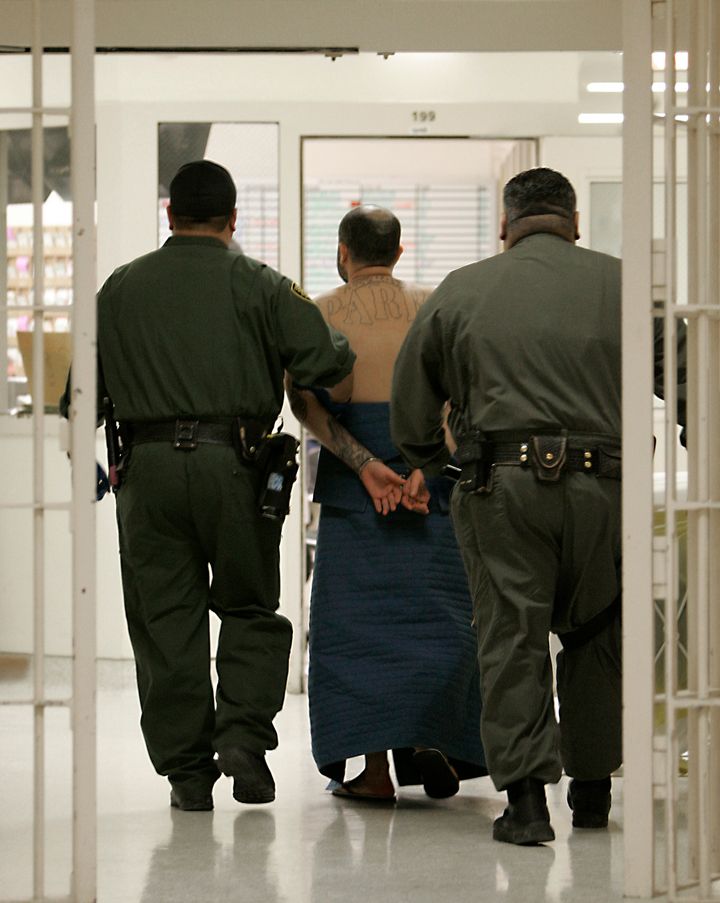
The overcrowding in California's state prison system constitutes cruel and unusual treatment, the Supreme Court ruled Monday in a case that focused on decades-long deficiencies in the mental and medical treatment available to inmates.
But the swollen, chaotic state of California's 33 prisons -- 18 of which operate at more than 180 percent capacity -- may lead to another unconstitutional policy: race-based lockdowns. The California system is currently under fire for managing violence among the massive numbers of inmates by confining whole races of individuals to their cells for 24 hours a day during lockdowns that can last for years.
"It's incredible that this is happening in the 21st century," said Rebekah Evenson, the attorney for the Prison Law Office, which filed a class action lawsuit against the California Department of Corrections and Rehabilitation last month on behalf of inmates claiming they were victims of race-based lockdowns. "The level of violence and level of lockdowns are very closely tied to overcrowding," said Evenson.
But the overcrowding does not justify controlling populations based on race, Evenson argued. California is the only state in the country to adopt this type of policy, and it imposes approximately one race-based lockdown each day in one of the system's 30 male prisons, the suit alleged.
During these types of lockdowns, usually the result of a fight between a gang of one race and a gang of another race, all members of each race are confined to their cells for 24 hours a day, regardless of whether they were involved in the incident. This means that many inmates can find themselves denied exercise, educational programs, family visits and even sunlight for months at a time for merely being the same race as an inmate involved in a fight.
The California Department of Corrections and Rehabilitation denies they have an institutional policy of race-based lockdowns. However, multiple documents from the Department of Corrections and Rehabilitations Appeals Branch "note that the CDCR policy is that when there is an incident involving any race, all inmates of that race are locked up."
"There is no policy," said Levance Quinn, public information officer for Sacramento State Prison, where currently about 500 inmates remain on 24-hour lockdown following a riot on Friday. "But I understand from the outside looking in how someone could confuse that," he said.
Quinn explained that gang fights happen all the time and that multiple gangs exist within each racial or ethnic group. Those types of fights -- when one white gang fights another white gang, for example -- aren't big security issues. The problem occurs when members of two different racial groups fight, said Quinn, because prison culture dictates that inmates must stick up for their fellow brothers.
"If someone from a black gang fights someone from a white gang, then all the blacks and all the whites get involved. So then you have to lock everyone down to make sure it's safe," he said.
This type of situation occurred last year in Sacramento, leading to a 24-hour lockdown that ran from Jan. 19 to Dec. 11 for every black and southern Hispanic inmate in the prison section known as B Facility, a building that houses 500 inmates in all. (Northern and southern Hispanics are often in opposing gangs, and CDCR sometimes divides the ethnic group into these two categories.) This lockdown ran for so long, the prison arranged for the two groups to make alternate trips to the yard to get exercise.
Quinn said that even though black and southern Hispanic inmates who had nothing to do with the fight were on lockdown for nearly a year, it's not indicative of an institutional race-based policy.
"It's not based on their race; it's based on these two knuckleheads that got in a fight," said Quinn. "It's really hard to explain to the outside world," he added.
A blue sign hangs outside the wall of one of Evenson's defendants, Hanif Abdullah, jailed at Solano. It denotes a black inmate, and Abdullah has been confined to his cell for 24-hour lockdowns that applied to all black inmates five times in the last two years, Evenson's suit alleges.
Abdullah's cell, which he shares with one other inmate and is so small the two can barely stand up at the same time, has one window that looks into the interior of the dormitory. Each day during his confinement, which lasted a total of approximately six months over the course of two years, Abdullah watched the rest of the prison world go about their business just by virtue of not being black.
"He could hear staff announcing the privileges available to other races, 'School release for everyone except those [blacks] on lockdown,' 'Yard release for everyone except those [blacks] on lockdown,'" the suit reads. "Mr. Abdullah suffered from the indignity, humiliation, and inhumanity, of the stark race discrimination."
